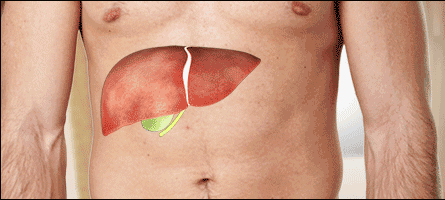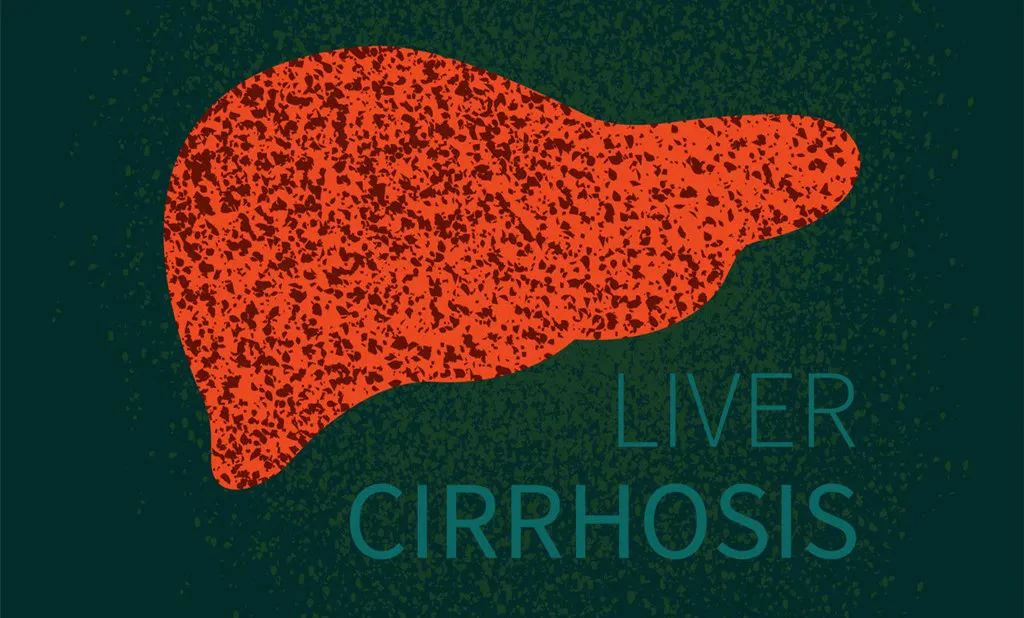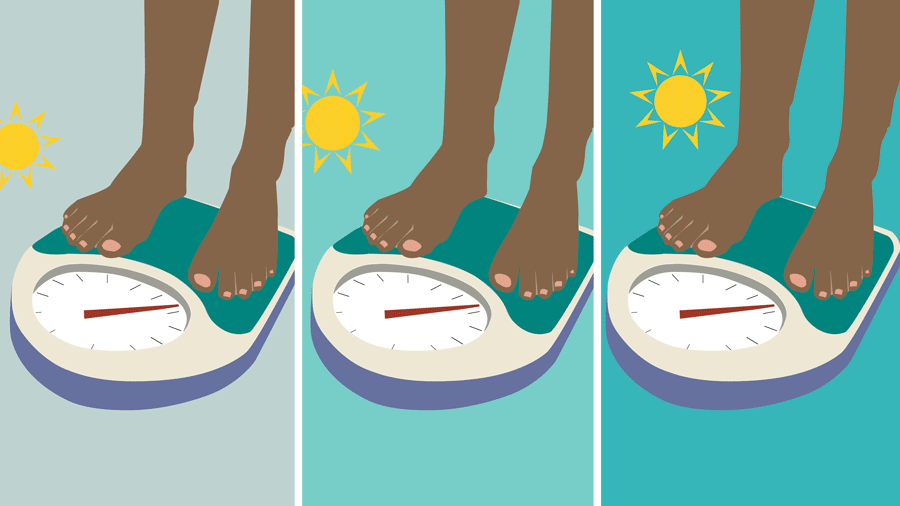Mild fatty liver also increases the risk of death, and doing these 3 points can reverse
When you see the medical report showing fatty liver, what is your first reaction? Mild fatty liver is “not a problem” in the eyes of many people.
Most patients with fatty liver have no obvious symptoms in the early stage. When symptoms such as pain and nausea appear, fatty liver is already more serious.

Does mild fatty liver matter?
Fatty liver is not an independent disease, it often indicates the existence of other metabolic abnormalities in the body, and it is likely to be complicated by metabolic-related diseases.
In 2020, the internationally renowned medical journal “GUT” published a study from Sweden online. The study found that even mild fatty liver disease (simple fatty liver) was associated with a 71% increased risk of death.
Researchers from Massachusetts General Hospital and Karolinska Institutet in Sweden studied the pathological data of 10,568 patients with fatty liver during 51 years from 1966 to 2017 and found that:
Compared with the control group, the risk of all-cause mortality increased by 71%, 114%, 144%, and 279% in patients with simple steatosis (ie, mild fatty liver), non-fibrotic steatohepatitis, liver fibrosis, and liver cirrhosis, respectively.
Fatty liver is a component of metabolic syndrome. It is associated with type 2 diabetes, cardiovascular disease, chronic kidney disease, and certain extrahepatic malignancies. Cardiovascular disease, extrahepatic cancer, and related complications were the main causes of death in patients.
Type 2 diabetes
After the formation of fatty liver, the ability of the liver to process blood sugar is significantly reduced, so it cannot keep blood sugar stable, which promotes the occurrence and development of diabetes.
Cardiovascular diseases
There are too many vicious lipids in the blood, which accumulate on the blood vessel wall and cause systemic blood vessel damage.
If it is attached to the blood vessels of the heart, a little blockage will cause coronary heart disease; if it is attached to the cerebral blood vessels, it will cause stroke and other cerebrovascular diseases in severe cases.
Chronic kidney disease
Fatty liver can cause blood sugar, blood pressure, blood lipids to rise, and high blood pressure, high blood sugar, etc. can cause glomerulosclerosis, and then develop into nephritis, weakening renal function, and serious renal failure.
Extrahepatic cancer
When the liver accumulates a lot of fat, chronic inflammation occurs, the bile excreted is abnormal, and the intestinal flora is disturbed. Over time, the immune function of the body will decline, and cancer cells are more likely to proliferate in the body, leading to the occurrence of non-liver cancers such as colorectal cancer and breast cancer.
I’m obviously not fat, so why do I have fatty liver?
In the impression of many people, those with fatty livers are usually fat people.
Excessive nutrition will indeed cause excessive accumulation of fat in the body, and a large amount of fat accumulates in the liver, resulting in fatty liver. But the fatty liver is not all caused by obesity, there are the following major causes:

- Malnutrition
When insufficient food intake, digestive disorders, etc. cause malnutrition, there is not enough apolipoprotein in the body to transport triglycerides, and a lanumberount of triglycerides are deposited in the liver, resulting in fatty liver.
Studies have shown that, compared with obese people, lean people with fatty liver have more serious liver damage once they have liver diseases such as hepatitis.
- Lose weight too fast
Excessive dieting, vegetarianism, crazy exercise, or other measures to lose weight quickly often lead to a stronger desire to eat, easily induce overeating after dieting, and accelerate the development of fatty liver.
Today, the incidence of fatty liver in young women is increasing rapidly, most of which are related to excessive weight loss.
- Malnutrition
People who drink for a long time are prone to develop alcoholic fatty liver disease, and their livers have fatty infiltration. According to statistical analysis, people who drink more than 80 to 160 grams per day have a 5 to 25-fold increase in the incidence of alcoholic fatty liver disease.
If you are a person who has been drinking for a long time, is obese, or has hepatitis B, after the diagnosis of fatty liver, it is necessary to further check related indicators such as inflammation, and regularly monitor the liver condition.
- Diabetes
As a metabolic syndrome, it causes abnormal metabolism of carbohydrates, proteins, and fats in the body, about 50% of diabetic patients may suffer from fatty liver.
- Drug abuse
Drugs entering the body need to be detoxified by the liver. Some drugs or chemical poisons such as tetracycline, lipid-lowering drugs, health products, arsenic, lead, silver, mercury, etc. will damage the liver and interfere with lipoprotein metabolism. Long-term abuse will increase the risk of drug-induced fatty liver. probability.
To reverse do the following:
Generally speaking, fatty liver is a reversible disease, and early diagnosis and timely treatment can return to normal.
Being overweight and obese due to a poor lifestyle are major risk factors for fatty liver. To prevent and improve fatty liver, you must start with diet, weight, and exercise:
No.1 Balanced diet
Make sure to eat three meals a day. Avoid high-fat, high-cholesterol, high-calorie diets. Reduce the intake of carbohydrates and sweets such as sugar, honey, jam, etc. Eat less animal offal, fried or fried food, quit smoking and drinking.

Properly increase protein intake, prefer lean meat, fish, eggs, and other foods rich in high-quality protein. Get enough vitamins, minerals, and dietary fiber, and eat plenty of fresh vegetables, fruits, and algae.
No.2 Weight Control
The primary goal of treatment for fatty liver disease is weight loss. A 52-week study in the journal Gastroenterology showed:
58% of patients with fatty liver had their symptoms reduced if they lost more than 5% of their body weight;
If the body weight is reduced by more than 10%, the fatty liver remission rate reaches 90%, and the fibrosis reversal rate reaches 45%.
It is recommended that patients with fatty liver lose 0.5 to 1 kg of weight per week, and lose more than 5% of their body weight within one year until they reach a healthy weight.

No.3 Exercise 3 hours a week
A Stanford University study found that 3 hours of recreational exercise per week significantly reduced the risk of non-alcoholic fatty liver disease, liver fibrosis, and cirrhosis.
The researchers’ segmented analysis of participants’ exercise time found:
Exercise 150-299 minutes or more than 300 minutes per week can reduce the incidence of NAFLD by 40% and 49%, respectively.
At least 300 minutes of physical activity per week was associated with a 59% and 63% reduction in the risk of liver fibrosis and cirrhosis, respectively.
Try to choose an exercise method that you like and can persist for a long time, such as swimming, jogging, brisk walking. You can also take a walk after dinner and exercise outdoors on weekends.